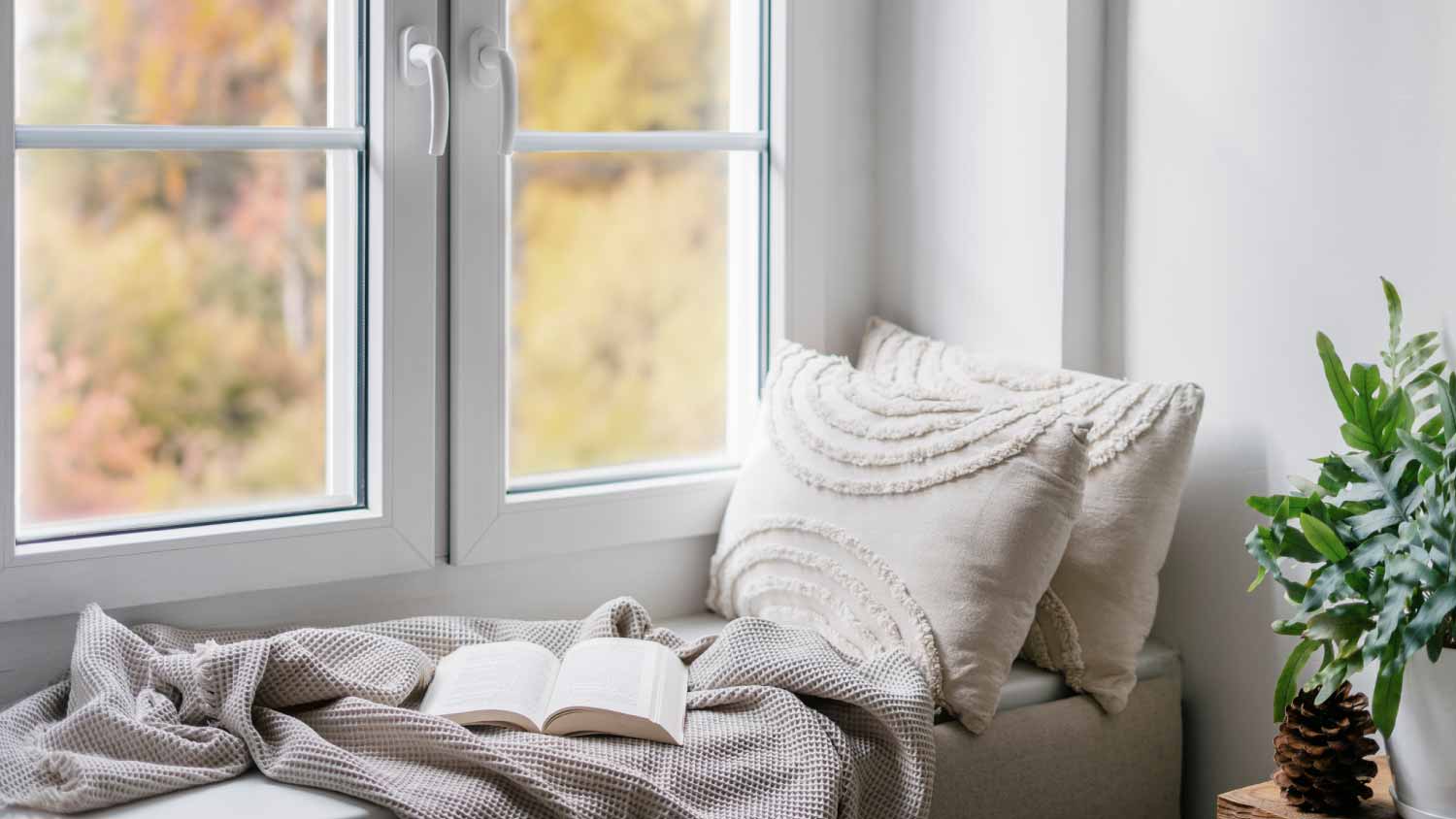
From a small window over the kitchen sink to a grand living room window, picture windows add light and great views. Learn how much picture windows cost.
A no-tears guide to this important home exterior detail


Weep holes are small openings in brick walls and windows.
Moisture trapped behind walls can cause structural damage.
Weep holes drain out water trapped in walls and windows.
Avoid drilling new holes yourself; rely on pros for repairs.
Avoid clogging or covering weep holes.
Brick siding on a home is sturdy and beautiful, but it’s also porous. If moisture gets trapped behind your brick walls, it can cause leaks or lead to other serious structural damage. But fear not; that’s where weep holes come in. Learn how these important openings in your walls and windows let your brick home breathe, plus find out what you can do to properly maintain them.
A weep hole is a small opening inserted in a brick façade or a window designed to let water escape from the building envelope of a home.
The building envelope comprises the walls, roof, floors, windows, doors, and everything else that separates the inside wood frame structure of a home from the outside. This outer barrier does work to protect and insulate the home’s interior, but a brick home needs additional help from weep holes to prevent moisture from building up inside and leaking into the home.
When moisture gets behind your walls, it can cause mold, mildew, and rot. Without functioning weep holes, you may eventually have costly structural issues like decaying studs. Excess moisture is also a breeding ground for mold, which can cause health problems for anyone in the home.

When taking on this project, expect questions only a pro can answer. With our network of local pros, you'll get the job done and your questions answered—without the hassle and stress of doing it yourself.
While all weep holes share the same essential purpose of creating an outlet for moisture, there are actually several different types of weep holes. These different options are used in different penetration points of a home or building. Here's a look at each one.
While they aren't always obvious to the naked eye, brick weep holes are common. They are those small vertical spaces that you can see in your brickwork's mortar. Brick weep holes are essential for allowing moisture and condensation to escape from brick. Contractors create brick weep holes at strategic intervals based on local code regulations.
With water causing such a threat to windows, it makes sense that windows have their own weep holes. Weep holes allow water that gets into the window to drain out instead of pooling near the sill and frame. In general, you'll find your window's weep hole near the bottom exterior frame. However, not all windows have weep holes. You may instead notice that your windows have sloped sills that direct water away.
Retaining walls and other earth-holding structures also need protection from moisture damage. This is achieved through weep holes that direct water out of retaining walls to decrease the amount of hydrostatic pressure that naturally builds up after rainfall or flood conditions. When a retaining wall is built without weep holes, there's a strong risk that the pressure of water buildup will stress the wall to the point of failing or collapsing.
Per the International Residential Code (IRC), weep holes must be a minimum of 3/16 of an inch, or about 5 mm. You may find weep holes when you examine your exterior brick walls or windows, but you’ll have to look closely to see them.
Weep holes are often located at the bottom of brick exterior walls. They look like vertical gaps in the mortar joints between bricks. Because brick masonry is porous, water may penetrate the surface and get behind the wall. Weep holes allow water to exit as gravity pulls it to the bottom of the wall, just above the foundation. You’ll find them above doors, windows, and any other openings in a home’s exterior.

Weep holes can also be found inside window tracks. The look can vary depending on the age and model of the window, but they’re typically black rectangular flaps with a horizontal sliver of daylight shining through the middle.
These flaps let water exit one way without allowing any water to flow into the home. They prevent water from sitting on the sill and causing rot—which is very important if you have wooden window frames and want them to last. But it’s also important to note that vinyl and aluminum windows, though more durable than wooden, also need weep holes to keep moisture out.
Some brick homes may not have weep holes. This can be the case with an older home or if a previous owner mistakenly caulked over them. If you own or plan to buy a brick home that doesn’t have weep holes, don’t try to drill any on your own. Drilling holes in the wrong place may only make moisture and pest problems worse.
If your home doesn’t seem to have moisture issues and a home inspection confirms this, you likely don’t need to do anything. But if you do have a moisture problem and suspect that a lack of weep holes is the cause, hire a local home inspector to check your home and recommend specific action. The cost of brick wall repairs can be costly depending on how much work is required, so it’s best to get ahead of any problems.
The same goes for older windows. Newer windows are typically built to be energy efficient and low maintenance, but older windows might not have weep holes. Especially if you have windows with wood frames, you’ll want to make sure there’s an exit route for moisture; otherwise, you’ll soon have to replace a window because it’s rotting.
Like any drainage mechanism at your home, weep holes can experience problems. Before you look into how to repair a brick wall, make sure that the deterioration you're seeing isn't caused by failed weep holes that need to be repaired. Ideally, weep hole issues will be detected when you have brickwork at your home inspected regularly as part of home and chimney maintenance. Professionals who handle brick repointing or historic brick restoration will also help you address any underlying issues with your weep holes when updating your siding. Here are the most common weep hole problems:
Debris blockages that stop or reduce drainage and ventilation.
Loose mortar or paint from acid brick wash filling in weep holes.
Infestations of spiders, snakes, cockroaches, mice, insects, termites, and other pests.
Entry of embers from nearby fires.
If regular weep hole maintenance isn't enough to prevent these problems, homeowners can install weep hole covers that allow water and air to pass through weep holes while still blocking out debris, dirt, pests, and embers. Sealing up weep holes isn't advised because adding more mortar, caulk, or paint can actually trap water and moisture inside the brick.
Sealants prevent airflow and drainage. For homes, this poses risks for mold, mildew, and water damage. For retaining walls, sealants can increase hydrostatic pressure because water is unable to escape.
If your home has weep holes, it’s important to ensure that they continue to function the way they should. Otherwise, you’ll be calling out a local window contractor for repairs sooner than you’d like. Follow these tips to properly maintain your home’s weep holes.
Never seal, paint, or caulk over weep holes: Sealed holes won’t allow water to escape, forcing it to stay inside and causing leaks or damaging the structure of your home.
Use weep hole covers: You can buy grated covers or screens designed for weep holes. These covers allow air and water to flow out while blocking pests from getting in.
Keep vegetation away: Don’t allow garden plants to cover your weep holes or attract pests. A good rule of thumb is to keep plants at least 18 inches away from weep holes.
Clear out debris: Make sure that your window weep holes stay clear of dirt.
From average costs to expert advice, get all the answers you need to get your job done.

From a small window over the kitchen sink to a grand living room window, picture windows add light and great views. Learn how much picture windows cost.

The cost of new windows heavily depends on their size, but other factors come into play as well. This guide breaks down window costs based on various factors so you can make an informed budget for this project.

Is it time to upgrade your home’s windows? Learn more about window replacement costs, considering various window sizes, styles, and energy efficiency.

Want to know how long vinyl windows last? Learn the average lifespan of vinyl windows and the core factors that affect their performance over time.

Wavy window glass is commonly seen in homes that were built before the 20th century. Developments in the past 100 years have made for smoother glass, but that doesn’t mean you should ditch the waves and replace your original windows.

Learn how to clean a window well properly and safely. Using common cleaning supplies, you can remove dirt, debris, grime, rust, and other unwanted materials.